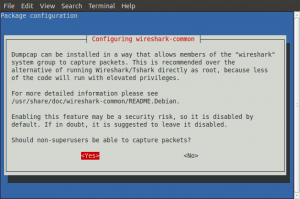I have reconfigured my MythTV backend server to shutdown automatically when there are no recordings within the next couple of hours. It does this using ACPI and wakes up automatically using the NVRAM Alarm function built in to the computer’s motherboard. However, one annoying aspect that I found quite quickly afterwards was that my backend would shutdown while I was watching recordings on my PlayStation3 or WD TV Live.
I found that the MythTV event mechanism for detecting clients and playback only seems to work for MythTV frontends and not for UPnP AV clients like the PS3.
After thinking about the problem for a while, I realised that all I needed was a script that could detect my UPnP AV clients and tell MythTV not to shutdown just yet.
Fortunately, MythTV has the ability to specify such a script to be called. It only needs to return ‘1’ to the calling process to inhibit the reboot, or ‘0’ to let it go ahead.
UPnP AV clients connect to the backend using port 6544. The netstat program reports UPnP clients as ‘ESTABLISHED’ if they are in use. It also reports other states when a recording has ended but I don’t care if my backend powers down on an idle playback device so my preshutdown check script is really simple. It probably needs some modification if you use a MythTV Frontend. I only use MythWeb with UPnP clients so I can’t test a frontend with it.
#!/bin/bash
# Pre shutdown check command should return one of the following values
# 0 : Allows the backend to reboot
# 1 : Sends the backend around the idle timeout again
# 2 : Resets the Client Connected flag (not set in any case for UPNP clients)
# This script detects UPnP AV clients so the return value of 2 is never used.
netstat -tun | grep :6544 | grep -i established
if [ $? = "0" ] ; then
# Grep found a match
exit 1
else
# Grep found nothing
exit 0
fi
# End of file
The output of the grep’d netstat is recorded in /var/log/mythtv/backend.log so you can see a history of it working.



